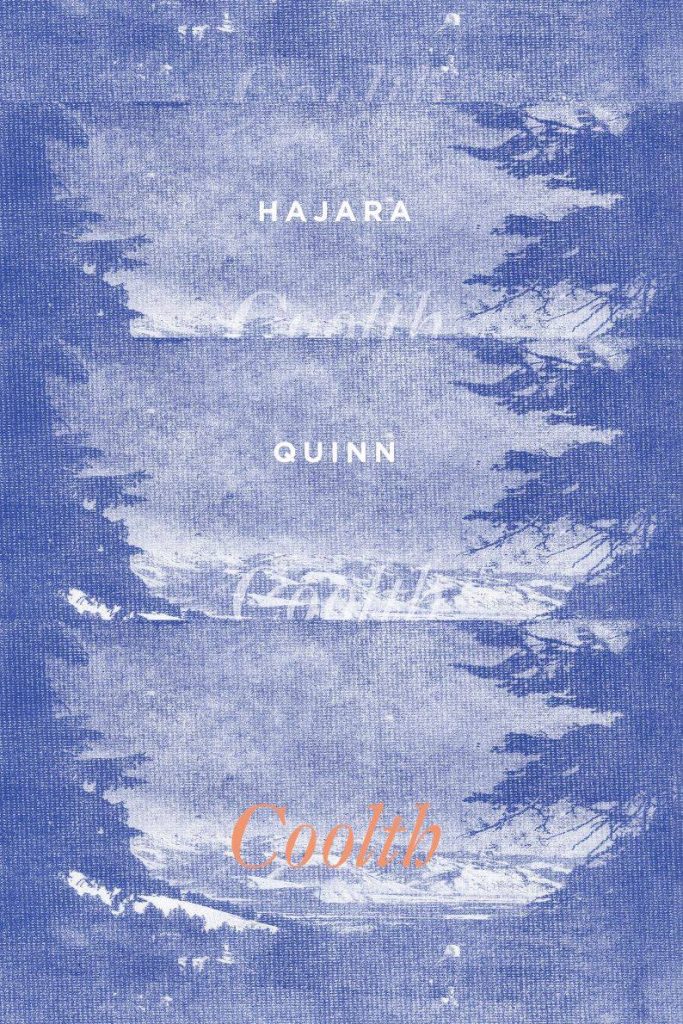Hajara Quinn

One of the best things about the IPRC is the people who work there: professional artists with the knowledge and experience to help foster creative minds. One of those people is poet Hajara Quinn, who is the Program Director at the IPRC. She is also an editor with Octopus Books; her first book Coolth was published by Big Lucks Books in 2018. I caught up with Haji at the IPRC on a sunny Sunday afternoon to discuss her life as a poet, and her new collection of poems.

ELEVEN: Can you tell me about yourself? How long have you been writing poetry?
Hajara Quinn: I can’t remember a time when I wasn’t taken with the impulse to document. I also can’t remember a time when I wasn’t interested in the book as an object. I wrote stories from a young age, but I don’t think that it was until late middle school/early high school that I began to recognize my writing as more aligned with poetry than fiction. In high school, I encountered Virginia Woolf and realized that what I was looking for in a reading experience was more concentrated in her writing than anything I’d experienced up until that point. Her language cast a spell — as much as I cared about the characters, it was the language that the characters were cast in that kept me. It was around that time that I found myself pivoting somewhat intuitively to seeking out more poetry.
11: What is the genesis of this wonderful book of poetry?
HQ: The poems were written between 2011 and 2017. I’d moved across the country in 2012 from Portland to Ithaca for an MFA at Cornell University, and while there, I had the opportunity to work in a sustained way on a thesis/manuscript that would become Coolth. I’d been writing toward a manuscript in the years leading up to that time. I continued working on the manuscript in the years after graduating, but I don’t know that it would have materialized in that time frame without those two years in school.
11. You seem to have a lot of fun with language in this book, especially with the titular poem, Coolth. Do you enjoy coming up with new words to express an idea that had previously been limited by our language?
HQ: Coolth is 100% a word! I don’t know if it’s in the OED but just last month it popped up on dictionary.com’s word of the day. I would say that it’s true that I am endlessly delighted by and impressed with the power of language — the possibility and wild elasticity of it. I feel in touch, being in awe of language when I encounter neologisms, or even words that feel like, but are not technically, new (like coolth or darkle) — or spoonerisms, puns, portmanteaus, or words that are changed or inflected to function as a different part of speech. But even seeing familiar words in new context has that ability to remind us of the latent electricity in the words that we use all day every day.
11: I picked up a musical quality to your poetry. Like you are using the instruments of language to create a scene, or relay a specific emotion. Can you talk about the musicality in your poetry? Do you think about rhythm in a formal way?
HQ: Even though I don’t have as much experience writing in strict form — not a lot in the way of formal rhyme schemes or metrically formal poetry in this collection — I do love the music that lives in words, in overheard conversations, and found language. I love the rhythms that arise out of phrases or in idiomatic constructions. Alliteration, slant rhyme, the rhythm of particular strings of syntax — I do think that I’m attuned to those special effects. The way that the rhythm of how something is said can for sure contribute to the mood, or heighten an effect.
11: This month we are featuring the IPRC in the Know Your Makers section. I read in your acknowledgements that the cover was inspired by a plate from the Letterpress Studio. Can you tell me about the process of making that cover image?
HQ: The cover image was scanned from a print that Heather Lane had made for a Cinema Project flier. There’s a lot of texture from the paper in addition to the texture from the halftone letterpress cut that the impression was made from. To be clear, I didn’t make the impression, nor did I design what the cover became. I can say that one of the perks of being on staff at the IPRC is getting to see so much inspiring work in progress in the letterpress, risograph, and screenprinting studios on a daily basis.

CORN BELT
One letdown follows
on the heels of another—
each pings me sharply,
like pearls slipped gently
off their strand and
flushed individually
down the toilet
of the motel room in
Twin Falls, Idaho,
where they were
so regrettably left
behind. Who am I indeed
to be making
wishes off the top
of the dandelion’s tufted
head? Dandelion, grant
me the serenity to
accept the things I cannot
change, grant me
the courage to change
the things I can, and
grant me the strength
to be less like an
anchoress and more
like a field of corn,
birthday-candling up
into its rows— or
like a tadpole, intuiting
what it must do in order
to become. Either way,
pour me into the green
lap of the corn belt.



